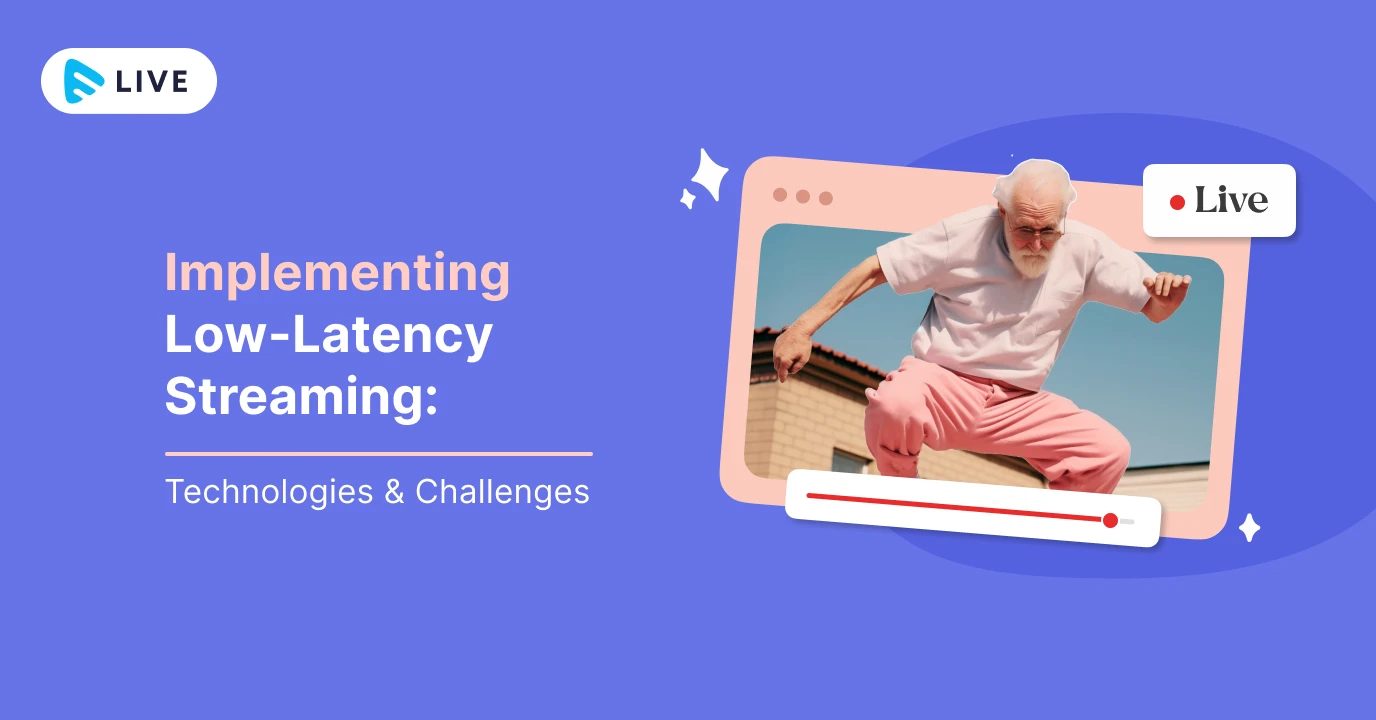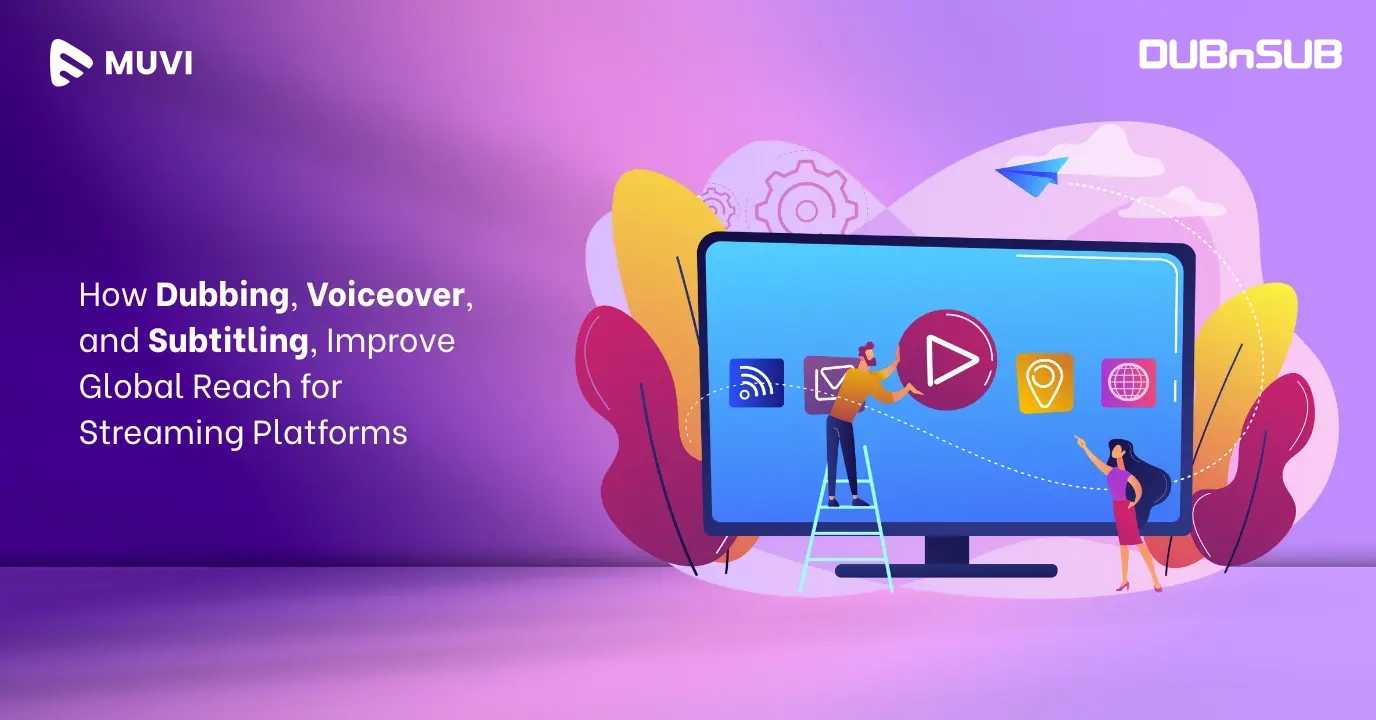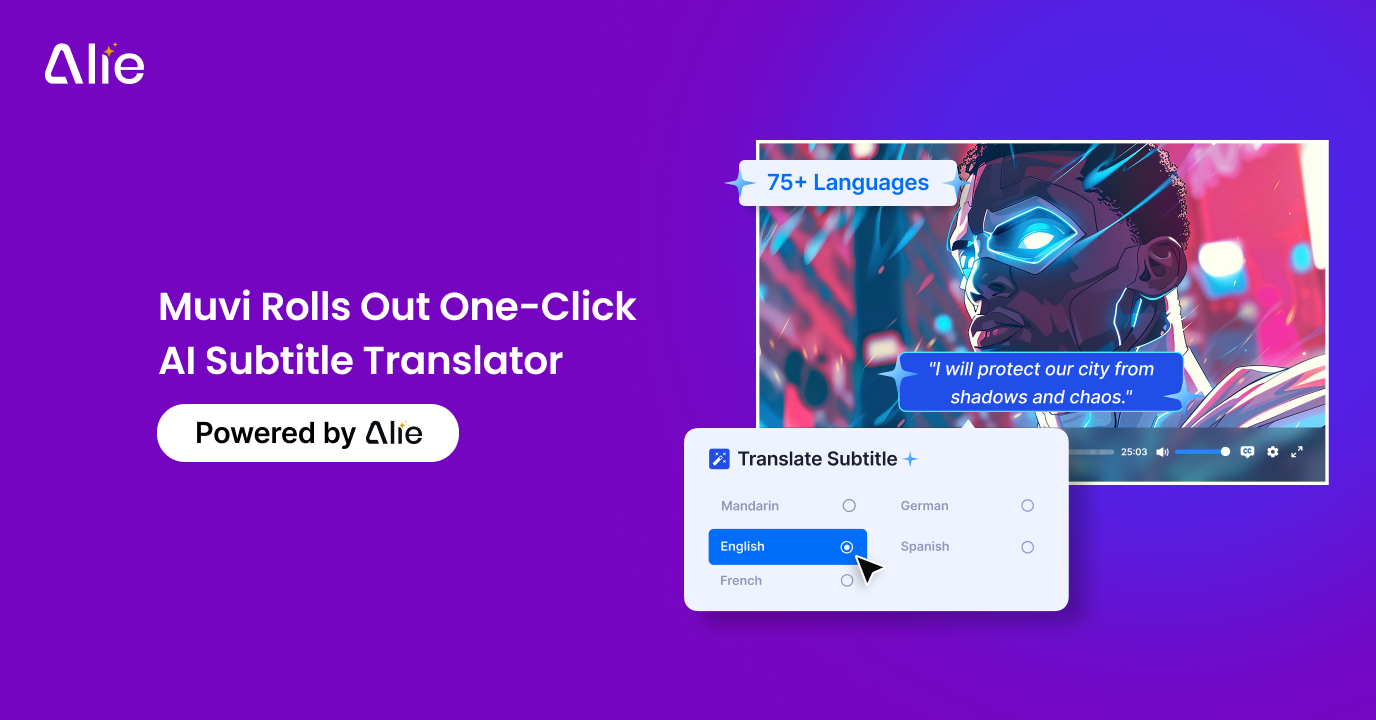In live streaming, the implementation of low-latency streaming stands as a pivotal technological advancement, ushering in a new era of real-time connectivity between the live streamers and audiences. Crucial for its ability to significantly reduce the time delay between content generation and viewer reception, low-latency streaming addresses the pressing need for immediacy in the digital sphere.
This imperative is particularly pronounced in live events, sports broadcasts, and interactive online experiences, where swift and seamless communication holds the key to enhancing audience engagement. By minimizing latency, live streamers can foster more responsive interactions, allowing audiences to react in real-time, participate in live discussions, and contribute to the unfolding narrative.
The deployment of low-latency streaming aligns seamlessly with the overarching business goals of content providers. Swift communication not only augments the overall viewer experience but also opens avenues for innovative revenue streams through interactive features such as real-time polls, audience feedback, and dynamic advertisements.
In this blog, we will walk you through all you need to know about low latency streaming – challenges, technologies, and more for a better idea. So, let’s get started!
What Is Low Latency Streaming?
Low-latency streaming refers to the practice of minimizing the time delay, or latency, between the generation of digital content and its delivery to end-users in real-time. In the context of streaming media, particularly live video broadcasts, low-latency streaming aims to reduce the time lag between the moment an event occurs and when it is viewed by the audience. This is achieved through the optimization of various components in the streaming workflow, including encoding, transmission, and decoding processes.
In practical terms, low-latency streaming ensures that the temporal gap between the live event and its representation on viewers’ screens is minimal, enabling almost instantaneous interaction and engagement.
This technological advancement is crucial for applications where immediate and dynamic audience participation is essential, such as live sports, online gaming, and interactive webinars. By mitigating latency, low-latency streaming enhances the overall viewer experience, fostering more responsive and interactive communication between live streamers and their audiences in the rapidly evolving landscape of digital content consumption.
Why Is Low Latency Streaming Crucial for Live Streaming?
1. Real-Time Interaction
At the heart of the significance of low-latency streaming lies the capacity to foster genuine real-time interaction between live streamers and their audiences. Traditional streaming models introduce latency, causing a delay between the occurrence of live events and their presentation on viewers’ screens.
This temporal lag diminishes the immediacy of communication, particularly impactful in scenarios such as live sports, breaking news, or interactive online gaming. By minimizing latency, low-latency streaming ensures that viewers witness events almost simultaneously as they unfold, paving the way for instantaneous reactions and discussions.
This real-time interaction enriches the viewing experience, creating a sense of shared presence and immersion that transcends physical distances.
2. Instant Viewer Feedback
Low-latency streaming facilitates instant viewer feedback, transforming content consumption into a participatory and dynamic experience. In scenarios where audience opinions or contributions hold significance, such as live Q&A sessions, webinars, or interactive entertainment, reduced latency becomes instrumental.
Viewers can express their thoughts, pose questions, or contribute to polls with minimal delay, creating a seamless and fluid exchange between live streamers and their audience. This instantaneous feedback loop not only enhances the overall engagement but also empowers creators to adapt their content in response to viewer sentiments, creating a more personalized and responsive streaming environment.
3. Live Audience Engagement
The crux of successful live streaming lies in audience engagement, and low-latency streaming serves as a key in achieving this objective. Whether it’s a live concert, a gaming session, or a virtual conference, the ability to engage the audience in real-time is paramount.
Reduced latency allows for immediate reactions to content, such as cheering during a live sports event or reacting to a plot twist in a gaming stream. Live audience engagement is not just limited to passive viewership; it includes active participation through comments, likes, and shares.
By diminishing the delay in content delivery, low-latency streaming transforms the viewing experience into a dynamic and communal activity, where audiences feel an active connection to the unfolding narrative.
4. Reduced Video Lag
One of the primary challenges in live streaming has been the presence of video lag, the delay between the occurrence of an event and its representation on viewers’ screens. This lag, often attributed to latency in the streaming pipeline, can detract significantly from the overall user experience.
Reduced video lag, facilitated by advancements in low-latency streaming technologies, ensures that the temporal gap is minimized, providing users with a near-instantaneous view of live events. Whether it’s a live sports match, a music concert, or a breaking news broadcast, the reduction in video lag transforms the viewing experience into a more fluid and immediate engagement.
5. Dynamic Content Interaction
Dynamic content interaction represents a paradigm shift in the way users engage with digital content, particularly in live streaming scenarios. Beyond passive viewership, dynamic interaction involves real-time engagement with the content, often facilitated by features such as live chats, reactions, and audience polls.
Reduced latency plays a pivotal role in enabling dynamic content interaction by allowing users to respond almost instantaneously to the unfolding events. This can manifest in various forms, including live commentary during a gaming stream, real-time discussion forums for a webinar, or interactive elements overlaid on live broadcasts.
By minimizing delays, dynamic content interaction transforms the user from a passive observer into an active participant, contributing to a more vibrant and engaging digital experience.
6. Timely Q&A Sessions
Live streaming has revolutionized the way live streamers and audiences interact, and timely Q&A sessions exemplify this transformative dynamic. In traditional settings, latency could impede the flow of questions and answers, creating a disjointed and less engaging experience.
With reduced latency, Q&A sessions become more fluid and immediate. Viewers can pose questions in real-time, and live streamers can respond almost instantaneously, fostering a direct and timely exchange. This not only enhances the depth of audience engagement but also provides a sense of direct connection between live streamers and their viewers, transcending the limitations of physical distance.
7. Enhanced User Experience
The culmination of reduced video lag, dynamic content interaction, and timely Q&A sessions contributes to an overall enhanced user experience in live streaming. Users are no longer passive consumers of content but active participants in the unfolding narrative.
The immediacy of interaction and the minimal delay in content delivery create a sense of presence, making users feel more connected to the live events they are witnessing. This enhanced user experience is pivotal for the success of live streaming platform and live streamers, as it fosters loyalty, encourages repeat engagement, and positions live streaming as a dynamic and interactive medium.
Challenges To Implement Low Latency Streaming
1. Network Infrastructure Constraints
A substantial challenge in the implementation of low-latency streaming lies in navigating the constraints of network infrastructure. The speed and reliability of the internet connection directly impact the ability to transmit data swiftly from the source to the end-user.
In regions with inadequate broadband access or inconsistent network speeds, maintaining low latency becomes a formidable task. The inherent variability in internet quality can result in packet loss, jitter, and latency fluctuations, compromising the overall effectiveness of low-latency streaming.
Overcoming these network infrastructure constraints often requires a multi-faceted approach, including optimization of content delivery networks (CDNs), strategic server placement, and the adoption of advanced protocols designed to mitigate the impact of variable network conditions. In addition to addressing network quality and speed for low-latency streaming, it’s important for streamers using macOS to be aware of potential system-specific issues. For instance, those encountering a macOS Sonoma issue can find troubleshooting steps and solutions to ensure optimal streaming setup.
2. Encoding and Decoding Delays
The encoding and decoding processes play a critical role in the streaming workflow and introduce challenges in achieving low latency. Encoding, the process of converting raw video data into a compressed format suitable for transmission, can introduce delays, especially with more advanced compression algorithms that prioritize higher compression efficiency.
Similarly, decoding the compressed data at the viewer’s end requires computational resources and time. Balancing the trade-off between compression efficiency and speed becomes a delicate challenge.
To address this, live streamers and Video Streaming Platform must carefully select encoding parameters, employ low-latency codecs, and leverage hardware acceleration where available. Additionally, advancements in real-time encoding technologies contribute to mitigating the encoding and decoding delays, crucial for achieving the desired low latency live streaming experience.
3. Buffering Issues
Buffering, a perennial woe in the streaming landscape, poses a significant hurdle to the implementation of low-latency streaming. Traditional streaming models incorporate buffers to smooth out fluctuations in network conditions and ensure a continuous playback experience.
However, in the context of low-latency streaming, excessive buffering introduces undesirable delays, defeating the purpose of real-time communication. Striking the right balance between maintaining a sufficient buffer to handle network variability while minimizing its impact on latency is a nuanced challenge.
Solutions involve adopting adaptive streaming techniques, optimizing buffer sizes based on real-time network conditions, and employing advanced algorithms that dynamically adjust buffer requirements. By addressing buffering issues, streaming platforms can enhance the responsiveness of the streaming experience without sacrificing the reliability of content delivery.
4. Device Compatibility Challenges
One of the persistent challenges in the implementation of low-latency streaming revolves around ensuring compatibility across a diverse range of devices. With users accessing content on smartphones, tablets, smart TVs, and various other platforms, achieving a seamless low-latency experience on each device presents a complex undertaking.
Different devices may have varying capabilities in terms of processing power, network connectivity, and display capabilities. To address these challenges, streaming platforms must adopt adaptive streaming technologies that dynamically adjust the content delivery based on the device’s specifications. This involves creating multiple versions of the same content at different quality levels and ensuring that the appropriate version is delivered to each device, optimizing both latency and visual fidelity.
5. Content Delivery Complexities
Content delivery networks (CDNs) play a crucial role in distributing streaming content efficiently, but their implementation requires careful consideration. Distributing content across a global network of servers introduces latency due to the physical distance between the server and the end-user.
Strategies such as server placement optimization, edge computing, and efficient CDN configurations become essential to mitigate these challenges. Moreover, the type of content being delivered also influences the complexities of content delivery.
Live streams, with their dynamic nature, require a different approach compared to on-demand content. Achieving low latency in live streaming necessitates minimizing the time it takes for the content to traverse the entire delivery pipeline, from the source to the end-user’s device.
6. Quality vs. Latency Trade Off
A perpetual dilemma in low-latency streaming revolves around striking the right balance between maintaining high-quality content and achieving minimal latency. As content quality often relies on efficient encoding, higher compression ratios may be employed to reduce the volume of data transmitted, thereby lowering latency.
However, this approach can lead to a tradeoff where the visual quality of the content is compromised. Live streamers and streaming platforms must navigate this delicate balance, aligning their objectives with the expectations of their audience. Some applications, such as live sports broadcasts, prioritize lower latency to facilitate real-time reactions, while others, like cinematic streaming services, may emphasize preserving higher visual fidelity at the cost of slightly increased latency.
This tradeoff underscores the need for an adaptive streaming solution that can dynamically adjust quality levels based on real-time network conditions, user preferences, and the specific requirements of the content being delivered.

A Guide To Implement Low Latency Streaming
1. Choose Optimal Codecs
Selecting the right codec is a foundational step in achieving low-latency streaming. Codecs, or compression-decompression algorithms, play a crucial role in encoding and decoding video data for transmission. Traditional codecs may prioritize compression efficiency over speed, leading to latency in the encoding process. To address this, opt for low-latency codecs that strike a balance between compression efficiency and real-time processing.
H.264, while widely used, may introduce noticeable delays due to its emphasis on compression. In contrast, H.265 (HEVC) and VP9 offer improved compression efficiency with lower latency, making them suitable choices for low-latency streaming. The emerging AV1 codec also shows promise in delivering high-quality video with reduced latency.
Moreover, consider utilizing hardware acceleration where available. Dedicated hardware for encoding and decoding processes can significantly enhance the speed of video processing, contributing to lower latency. When making codec choices, it’s crucial to align them with the devices your audience commonly uses, ensuring broad compatibility without sacrificing performance.
2. Reduce Bitrate Resiliently
Bitrate optimization is a critical factor in achieving low-latency streaming without compromising quality. Bitrate refers to the amount of data transmitted per second, and while higher bitrates can enhance visual quality, they often come at the cost of increased latency. To mitigate this, employ adaptive bitrate streaming (ABR) techniques.
Adaptive bitrate streaming involves dynamically adjusting the quality of the video stream based on real-time network conditions. When network bandwidth is constrained, the stream automatically switches to a lower bitrate, reducing the data transmitted and minimizing latency. Conversely, during periods of ample bandwidth, the bitrate can be increased to maintain optimal visual quality.
Utilize techniques like multi-bitrate streaming, where multiple versions of the same content at different bitrates are created. This allows the streaming platform to seamlessly switch between different versions based on the viewer’s network conditions. By adapting to varying network speeds, bitrate optimization becomes a resilient solution for achieving low-latency streaming without sacrificing content quality.
3. Utilize Content Delivery Networks
The role of Content Delivery Networks (CDNs) is pivotal in mitigating latency challenges associated with the physical distribution of streaming content. CDNs consist of a network of geographically distributed servers that cache and deliver content to users based on their proximity to these servers. Leveraging CDNs helps reduce the distance data needs to travel, minimizing latency.
Strategically placing servers in various locations worldwide is fundamental for efficient content delivery. This reduces the round-trip time between the user’s device and the server, contributing to a faster and more responsive streaming experience. CDNs excel in delivering static content, and utilizing them for caching dynamic content—common in live streaming scenarios—requires careful optimization.
For live events, consider using edge computing in conjunction with CDNs. Edge servers, placed at the network edge closer to users, can process and deliver content more rapidly than centralized servers. This is particularly beneficial in reducing latency during live broadcasts, where real-time interactions and feedback are paramount.
Furthermore, explore the integration of Web Real-Time Communication (WebRTC) technology. WebRTC facilitates direct communication between browsers and enables peer-to-peer data transfer, bypassing the need for central servers. This technology is especially powerful in reducing latency for interactive streaming applications, such as online gaming or video conferencing.
4. Optimize Player Buffer Settings
The buffer settings of a player are instrumental in determining the balance between providing a smooth streaming experience and minimizing latency. A buffer is a temporary storage space that allows a player to preload a certain amount of content, ensuring seamless playback by mitigating the impact of network fluctuations. However, a large buffer introduces latency, as the player needs to accumulate an ample amount of data before playback begins.
To optimize player buffer settings, it’s crucial to strike a delicate balance. While a buffer is necessary to handle variations in network conditions and prevent interruptions, excessive buffering can hinder real-time interaction. Configure the buffer size based on the specific requirements of the content and the preferences of the target audience. Shortening the buffer duration can significantly reduce latency, enabling more immediate playback, particularly beneficial for live events or interactive applications where real-time engagement is paramount.
Moreover, consider implementing techniques such as Buffer Under-Run Protection, which dynamically adjusts the buffer size based on real-time network conditions. By intelligently adapting to varying bandwidth availability, this approach ensures a consistent streaming experience without compromising on latency.
5. Implement Chunked Encoding
Chunked encoding is a transformative technique in the realm of low-latency streaming, allowing content to be delivered in smaller, more manageable segments or “chunks.” Unlike traditional streaming methods, where the entire video file needs to be delivered before playback begins, chunked encoding divides the content into smaller fragments, enabling quicker transmission and playback initiation.
By breaking down the video into smaller units, chunked encoding minimizes the time it takes to deliver the first segment, reducing the initial buffering delay. This is particularly crucial for live events, where immediacy is paramount. Adaptive streaming technologies often incorporate chunked encoding, dynamically adjusting the size and bitrate of each segment based on real-time network conditions.
For live streaming scenarios, consider implementing a chunked encoding approach where each chunk represents a short duration of content, such as two seconds. This granular segmentation facilitates more responsive streaming, allowing viewers to access and experience content with minimal delay.
6. Leverage WebSockets Technology
WebSockets technology stands as a potent tool in the arsenal of low-latency streaming solutions. Traditionally, HTTP(S) protocols have been the backbone of content delivery, offering reliability and compatibility but introducing latency due to their stateless nature. WebSockets, on the other hand, establish a persistent, bidirectional communication channel between the client (viewer) and the server.
The significance of WebSockets lies in their ability to facilitate real-time, interactive communication without the need for constant re-establishment of connections. Unlike traditional HTTP-based streaming, which involves repeated requests for new chunks of data, WebSockets enable continuous communication, allowing the server to push new data to the client instantly.
Implementing WebSockets technology is particularly impactful for interactive streaming applications, such as live gaming or virtual classrooms, where real-time communication is crucial. By eliminating the need for frequent connection renegotiations, WebSockets significantly reduce latency, providing a more immediate and responsive streaming experience.
To integrate WebSockets effectively, ensure that both the server and client support this technology. Platforms that prioritize low-latency streaming often offer WebSockets as a communication option, allowing developers to harness its benefits without compromising on compatibility.
7. Prioritize Edge Compute Servers
Edge computing has emerged as a transformative paradigm in the realm of low-latency streaming. The conventional approach involves delivering content from centralized servers, often located at a considerable distance from the end-user. This physical separation introduces latency as data travels back and forth.
Prioritizing edge compute servers involves strategically placing servers closer to the network edge, reducing the physical distance between the server and the end-user. This proximity significantly diminishes the round-trip time, enabling faster content delivery and minimizing latency.
Edge compute servers are particularly impactful for real-time applications, such as live streaming and interactive content, where immediate responses are critical. By reducing the geographical distance between the server and the user, edge computing fosters a more responsive and immersive streaming experience.
Furthermore, consider leveraging multi-cloud and hybrid cloud architectures to distribute computational load effectively. By strategically deploying resources across multiple cloud providers or combining on-premises and cloud solutions, content providers can optimize server response times and further enhance the low-latency streaming environment.
8. Integrate Adaptive Streaming Techniques
Adaptive streaming techniques play a pivotal role in tailoring the streaming experience to the dynamic conditions of the network and the capabilities of the end-user’s device. Traditional streaming methods often involve a static bitrate, leading to buffering issues and increased latency. Adaptive streaming, on the other hand, dynamically adjusts the quality and bitrate of the video stream in real-time based on the viewer’s network conditions.
To integrate adaptive streaming effectively, utilize protocols such as HTTP Live Streaming (HLS), Dynamic Adaptive Streaming over HTTP (DASH), or Microsoft Smooth Streaming. These protocols facilitate the delivery of content in multiple resolutions and bitrates, allowing the player to adapt to changing network conditions seamlessly.
Segmenting the video content into smaller, more manageable chunks is a common practice in adaptive streaming. This not only facilitates the dynamic adjustment of quality but also contributes to the reduction of initial buffering delays, optimizing the low-latency streaming experience.
Additionally, leverage advanced techniques like Content-Based Chunk Scheduling, where the encoding and delivery of content are dynamically adjusted based on the significance of different segments in the video. This approach ensures that critical moments in the content receive priority treatment, enhancing the overall streaming experience.
9. Employ Caching Mechanisms
Caching mechanisms are instrumental in mitigating latency by storing frequently accessed content closer to the end-user. By strategically caching content at various points within the content delivery network (CDN), the need for repeated transmissions from the origin server is reduced, minimizing the round-trip time.
Implementing caching mechanisms involves intelligently selecting what content to cache, considering factors such as popularity, frequency of access, and dynamic nature. For live streaming scenarios, where content is often time-sensitive, caching live segments or chunks can be particularly effective.
Consider leveraging edge caching, where content is cached at servers located closer to the end-users. This approach complements the use of edge compute servers, creating a streamlined content delivery process. Edge caching not only accelerates content retrieval but also contributes to a more resilient and responsive low-latency streaming ecosystem.
Furthermore, explore the utilization of in-memory caching technologies, such as Redis or Memcached, to store frequently accessed data. This can include information related to user preferences, content metadata, or frequently requested chunks. In-memory caching minimizes the latency associated with retrieving data from traditional storage systems, providing a rapid and efficient means of delivering content.
10. Regular Monitoring and Adjustments
The pursuit of low-latency streaming is an ongoing journey that demands continuous monitoring and adjustments. Regularly evaluating the performance of the streaming infrastructure, network conditions, and user experience is paramount to identify bottlenecks and areas for optimization.
Implement comprehensive monitoring tools that provide insights into key performance metrics, including server response times, network latency, and user engagement statistics. Utilize real-time analytics to gain visibility into the user experience and identify any anomalies or issues that may impact streaming quality.
Establish a feedback loop that integrates user feedback, analytics data, and performance metrics. Users can provide valuable insights into their streaming experience, helping to uncover specific pain points or areas that require improvement.
Based on the monitoring data, be prepared to make timely adjustments to the streaming infrastructure. This may involve optimizing server configurations, adjusting caching strategies, or fine-tuning adaptive streaming algorithms. Regularly updating and fine-tuning the entire streaming pipeline ensures that it remains responsive to evolving network conditions and user expectations.
The Bottom Line
Undoubtedly, the significance of low-latency streaming lies in the transformative impact on user engagement and overall viewer experience. Swift and responsive streaming not only enables real-time interactions, instant feedback, and dynamic content interaction but also enhances the overall quality and immediacy of the streaming experience.
In a world where audience expectations for seamless and immersive digital encounters continue to rise, adopting a robust low-latency solution becomes a strategic necessity for content providers and streaming platforms.
Choosing a comprehensive solution that addresses the intricacies of low-latency streaming is paramount. Solutions like Muvi Live not only prioritize low-latency streaming but offer a suite of top-notch solutions. From optimized live streams and real-time analytics to seamless live stream embedding and interactive live chat features, Muvi Live ensures providing a cutting-edge and immersive live streaming experience for both live streamers and their audiences. Start for free today to explore more.

















Add your comment